1. Generative Art Algorithms
AI can create unique pieces of art by learning from vast datasets of existing artworks. These algorithms can generate paintings, drawings, and sculptures that explore new aesthetic territories, pushing the boundaries of creativity.
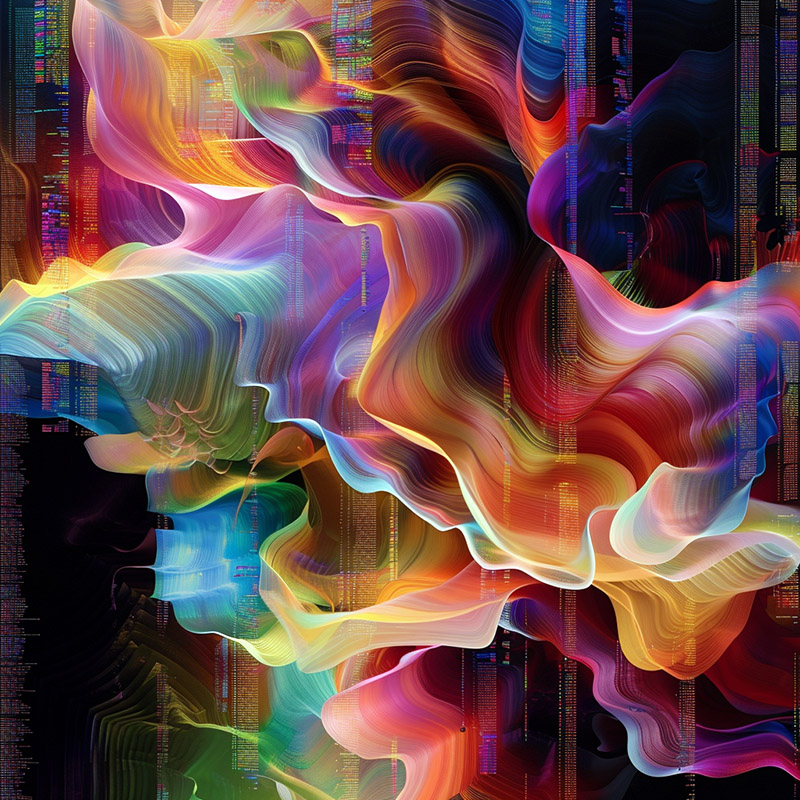
Far from replacing artists, generative art algorithms serve as a new medium for artistic expression, enabling creators to explore complex patterns and aesthetics beyond human capability. Artists can set parameters and guide the creative process, resulting in unique collaborations between human creativity and machine intelligence. This partnership opens up new artistic possibilities and expands the definition of art in the digital age.
Generative art algorithms provide artists with a powerful tool to create intricate and mesmerizing visuals that would be incredibly time-consuming or even impossible to produce manually. By harnessing the computational power of these algorithms, artists can explore vast parameter spaces and discover novel combinations of colors, shapes, and textures. This exploration process allows for serendipitous encounters with unexpected and captivating visual elements, sparking new ideas and directions for artistic expression.
The role of the artist in generative art is not diminished but rather transformed. Instead of directly manipulating every aspect of the artwork, the artist becomes a curator and director, setting the initial conditions, defining the rules, and guiding the algorithm's output. This involves carefully selecting the input data, adjusting parameters, and making aesthetic choices that shape the final outcome. The artist's creative vision and intuition remain crucial in determining the overall direction and style of the generative artwork.
Moreover, generative art algorithms can serve as a catalyst for creative experimentation and innovation. Artists can use these tools to break free from traditional artistic conventions and explore new forms of expression. By combining generative techniques with other digital media, such as virtual reality, interactive installations, or data visualization, artists can create immersive and engaging experiences that challenge viewers' perceptions and invite them to participate in the creative process.
The collaboration between artists and generative algorithms also raises intriguing questions about the nature of creativity and authorship in the digital age. As the line between human and machine creativity becomes increasingly blurred, it prompts us to reconsider traditional notions of artistic ownership and originality. Generative art challenges us to embrace a more fluid and collaborative understanding of the creative process, where the artist and the algorithm work together to produce something greater than the sum of its parts.
Furthermore, generative art has the potential to democratize artistic creation by making it more accessible to a wider audience. With the availability of user-friendly generative art tools and platforms, individuals without formal artistic training can explore their creativity and produce visually striking works. This democratization of art encourages a more inclusive and diverse artistic landscape, where people from various backgrounds can contribute their unique perspectives and ideas.
As generative art continues to evolve and mature, it will play an increasingly significant role in shaping the future of art and creativity. By embracing the potential of generative algorithms as a collaborative tool, artists can push the boundaries of what is possible, creating works that challenge our perceptions, provoke thought, and inspire new ways of seeing the world. The partnership between human creativity and machine intelligence in generative art represents an exciting frontier in the ongoing evolution of artistic expression.
2. Music Composition
AI systems can analyze musical structures and styles to compose original pieces of music in various genres. These compositions can serve as inspiration for human musicians or stand on their own as new contributions to the musical world.
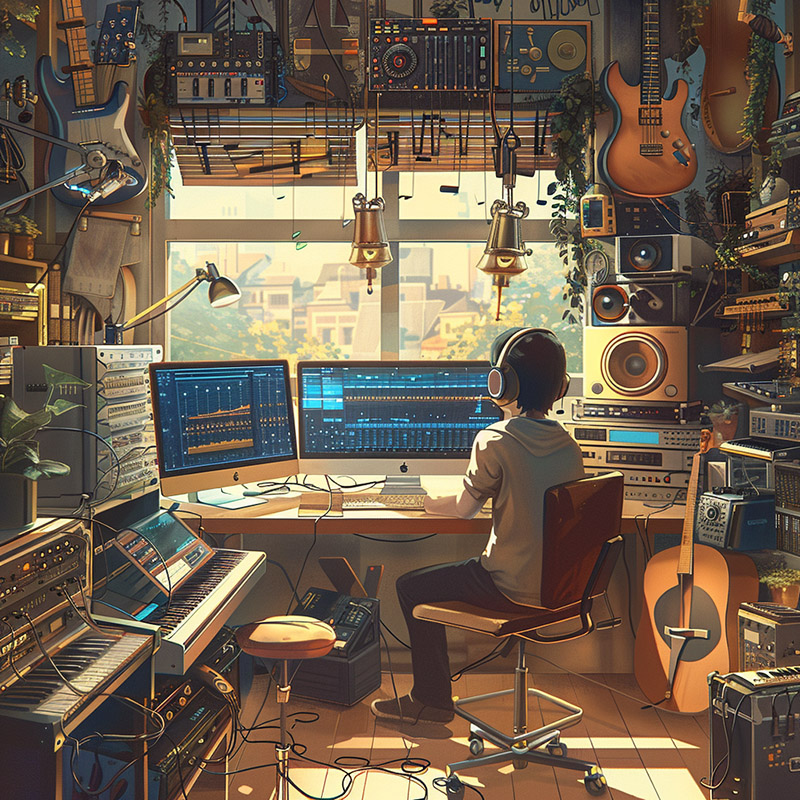
AI in music composition acts not as a competitor but as a collaborator, offering artists a tool to experiment with new sounds, structures, and harmonies. Musicians can leverage AI to generate ideas and explore musical pathways they might not have considered, enhancing their creative process. This symbiotic relationship allows for the creation of innovative compositions, pushing the boundaries of traditional music.
The integration of AI in music composition opens up a world of possibilities for artists. By training AI models on vast libraries of musical data spanning various genres and styles, these intelligent systems can suggest unique combinations of melodies, rhythms, and instrumentation. This collaborative approach enables musicians to break free from their usual patterns and explore uncharted territories in their creative endeavors.
AI-assisted music composition does not aim to replace human creativity but rather to augment it. The AI acts as a tireless assistant, capable of generating countless variations and iterations based on the artist's input. This rapid prototyping allows musicians to experiment with different arrangements, tempos, and harmonies in a fraction of the time it would take to manually compose and record each variation.
Moreover, AI can help bridge the gap between the artist's vision and their technical skills. For example, a songwriter with a melody in mind but limited knowledge of music theory can use AI to suggest complementary chords and progressions. This democratization of music creation empowers artists to focus on their creative vision while the AI handles the technical aspects.
The collaboration between human musicians and AI also has the potential to give rise to entirely new genres and styles of music. By combining the emotive and intuitive aspects of human creativity with the computational power and vast knowledge base of AI, artists can create compositions that transcend traditional boundaries. This fusion of human and machine intelligence can lead to the emergence of novel sonic landscapes and musical experiences.
However, it is essential to recognize that AI-generated music is not a replacement for human artistry. The emotional depth, personal experiences, and unique perspectives that human musicians bring to their compositions cannot be fully replicated by algorithms. Instead, AI should be viewed as a powerful tool that enhances and complements the creative process, allowing artists to explore new possibilities and push their musical boundaries.
As AI continues to evolve and become more sophisticated, its role in music composition will expand. Artists who embrace this technology and learn to harness its potential will be at the forefront of shaping the future of music. By collaborating with AI, musicians can unlock new realms of creativity, producing innovative and captivating compositions that resonate with audiences in unprecedented ways.
3. Interactive Art Installations
AI can power interactive art installations that respond to audience movements, sounds, or social media trends, creating immersive experiences that evolve in real-time and engage viewers in unprecedented ways.
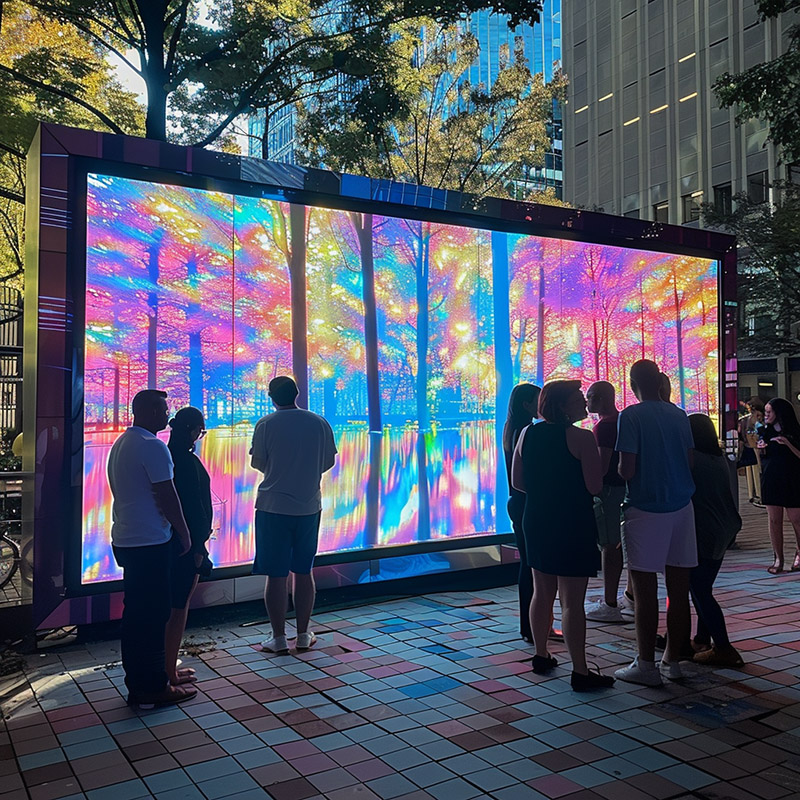
Interactive art installations powered by AI create dynamic spaces that respond to and evolve with audience participation. This technology transforms viewers from passive observers to active participants, creating a shared creative experience. Artists can use AI to explore themes of interactivity, perception, and the impact of technology on society, making art more accessible and engaging.
AI-driven interactive installations blur the boundaries between art and technology, inviting viewers to become co-creators in the artistic process. By incorporating sensors, cameras, and other input devices, these installations can detect and respond to the presence, movements, and actions of the audience. This real-time interaction allows the artwork to adapt and evolve based on the collective behavior of the participants, resulting in a unique and ever-changing experience.
One of the key advantages of AI in interactive art is its ability to process vast amounts of data and make intelligent decisions in real-time. This enables the creation of highly responsive and personalized experiences. For example, an installation could analyze the facial expressions, gestures, or voices of the participants and generate visuals, sounds, or other outputs that reflect their emotional states or intentions. This level of interactivity fosters a deeper connection between the audience and the artwork, making the experience more immersive and meaningful.
Moreover, AI-powered interactive installations can serve as powerful tools for social commentary and public engagement. Artists can use these technologies to create thought-provoking experiences that shed light on important issues, such as climate change, social inequality, or the impact of technology on our lives. By inviting viewers to actively participate in the artwork, artists can encourage critical thinking, spark conversations, and inspire action.
Interactive AI art also has the potential to make art more accessible and inclusive. Traditional art forms often rely on prior knowledge or cultural context to be fully appreciated. However, interactive installations that respond to simple actions or universal human behaviors can be enjoyed by a wide range of people, regardless of their background or expertise. This democratization of art helps to break down barriers and foster a more inclusive and participatory art world.
Furthermore, AI-driven interactive art opens up new possibilities for collaboration and cross-disciplinary experimentation. Artists can work with technologists, data scientists, and other experts to create innovative installations that push the boundaries of what is possible. These collaborations can lead to the development of new tools, techniques, and approaches that expand the creative potential of both art and technology.
As AI continues to advance, we can expect to see even more sophisticated and immersive interactive art experiences in the future. These installations may incorporate emerging technologies such as virtual reality, augmented reality, or haptic feedback to create even more realistic and engaging environments. They may also leverage advanced machine learning techniques, such as deep learning or reinforcement learning, to create even more intelligent and adaptive systems.
The potential for AI to transform interactive art and create new forms of creative expression is immense. As artists continue to experiment with this technology and push the boundaries of what is possible, we can look forward to a future where art and technology are seamlessly integrated, creating experiences that inspire, provoke, and engage audiences in powerful new ways.
4. AI-assisted Design
Designers can use AI tools to explore a wider range of options and combinations than would be possible manually. From fashion to graphic design, AI can suggest novel color schemes, patterns, and layouts, accelerating the creative process.
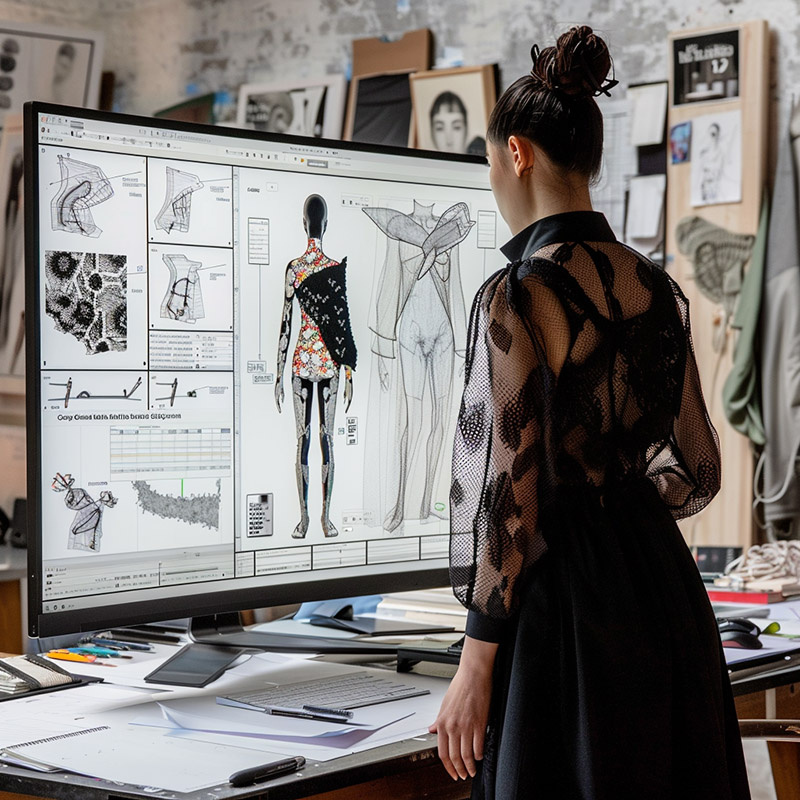
In design, AI acts as an invaluable assistant, automating tedious tasks and offering a vast array of creative options. This partnership allows designers to focus on the creative aspects of their work, pushing innovation and exploring new design frontiers. AI-assisted tools can suggest novel ideas and solutions, enriching the design process and leading to groundbreaking outcomes.
One of the key benefits of AI in design is its ability to handle time-consuming and repetitive tasks, such as resizing images, generating color palettes, or creating variations of a design. By automating these processes, AI frees up designers' time and mental bandwidth, allowing them to concentrate on the conceptual and strategic aspects of their work. This increased efficiency enables designers to iterate more quickly, test multiple ideas, and refine their designs to perfection.
Moreover, AI can serve as a powerful ideation tool, helping designers break through creative blocks and explore new possibilities. By analyzing vast datasets of existing designs, AI algorithms can generate novel combinations and variations that inspire designers to think outside the box. These AI-generated suggestions can serve as a starting point for further exploration and refinement, leading to designs that are both innovative and functional.
AI-assisted design tools can also help bridge the gap between a designer's vision and the technical skills required to bring it to life. For example, an AI-powered tool could automatically generate code for a website based on a designer's visual mockup, or optimize a 3D model for manufacturing based on the designer's specifications. This streamlines the design process and allows designers to focus on the creative aspects of their work, rather than getting bogged down in technical details.
In addition to enhancing individual designers' workflows, AI can also facilitate collaboration and knowledge sharing within design teams. By creating a centralized repository of design assets, styles, and best practices, AI systems can ensure consistency and coherence across multiple projects and team members. This helps to maintain brand identity, reduce duplication of effort, and foster a culture of continuous learning and improvement.
As AI continues to advance, we can expect to see even more sophisticated and specialized design tools emerge. These tools may incorporate advanced computer vision, natural language processing, and machine learning techniques to understand and respond to designers' needs and preferences. They may also integrate with other emerging technologies, such as augmented reality or 3D printing, to create even more immersive and interactive design experiences.
The partnership between designers and AI represents an exciting frontier in the field of design. By leveraging the power of AI to automate routine tasks, generate novel ideas, and optimize designs, designers can push the boundaries of what is possible and create truly groundbreaking work. As AI continues to evolve and mature, it will undoubtedly play an increasingly important role in shaping the future of design, while also challenging us to redefine the role of the designer in the age of artificial intelligence.
5. Digital Storytelling
AI can generate narrative structures, characters, and dialogues, offering new tools for writers and filmmakers. This can lead to innovative storytelling techniques and interactive narratives that adapt to the choices of the reader or viewer.
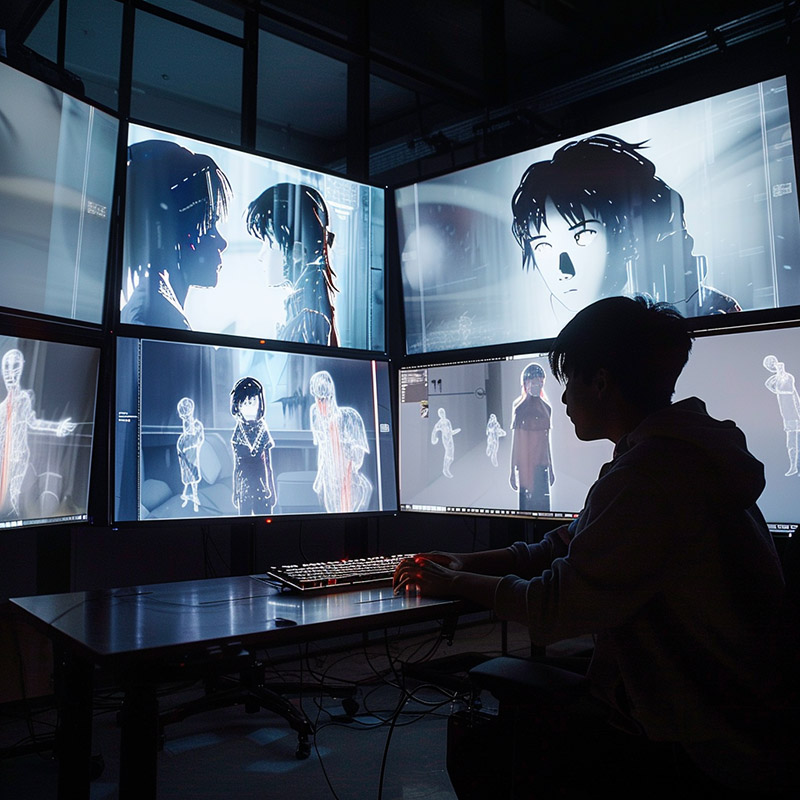
AI can enhance digital storytelling by generating narrative elements, characters, and plot twists, offering writers new perspectives and ideas. This collaboration can lead to more complex and engaging narratives, where AI's ability to process and analyze vast amounts of data can introduce unexpected and innovative storylines, enriching the storytelling landscape.
One of the key advantages of AI in digital storytelling is its ability to generate a wide range of narrative possibilities based on a set of predefined parameters or story prompts. By training AI models on extensive datasets of existing stories, characters, and plot structures, these systems can suggest novel combinations and variations that inspire writers to explore new creative directions. This can lead to the development of more diverse and inclusive narratives that push the boundaries of traditional storytelling.
Moreover, AI can help writers overcome creative blocks and generate fresh ideas when they feel stuck or uninspired. By providing a wide array of story elements, such as character traits, settings, or plot points, AI can stimulate writers' imaginations and help them break out of predictable patterns and tropes. This can result in more original and surprising narratives that keep readers engaged and invested in the story.
AI can also assist writers in creating more consistent and believable characters by analyzing their dialogue, actions, and relationships throughout the story. By identifying inconsistencies or gaps in character development, AI can suggest ways to strengthen and deepen the characterization, resulting in more well-rounded and memorable characters that resonate with readers.
In addition to generating narrative elements, AI can also help writers optimize their stories for different platforms and audiences. By analyzing data on reader preferences, engagement patterns, and market trends, AI can provide insights and recommendations on how to tailor the story's pacing, structure, and tone to maximize its impact and reach. This can help writers create stories that are more likely to succeed in today's crowded and competitive digital marketplace.
As AI continues to evolve, we can expect to see even more advanced and specialized storytelling tools emerge. These tools may incorporate natural language processing, sentiment analysis, and other techniques to create even more realistic and emotionally resonant narratives. They may also integrate with other emerging technologies, such as virtual reality or interactive video, to create even more immersive and participatory storytelling experiences.
The potential for AI to enhance and transform digital storytelling is immense. By leveraging the power of AI to generate new ideas, optimize narratives, and engage audiences, writers can create stories that are more complex, diverse, and impactful than ever before. As we continue to explore the possibilities of this exciting new frontier, it is clear that the partnership between human creativity and artificial intelligence will play an increasingly important role in shaping the future of storytelling.
6. Enhanced Visualization
AI algorithms can transform data into visual art, making abstract concepts tangible. Scientists and educators can use these visualizations to communicate complex ideas more effectively, opening up new avenues for artistic expression.
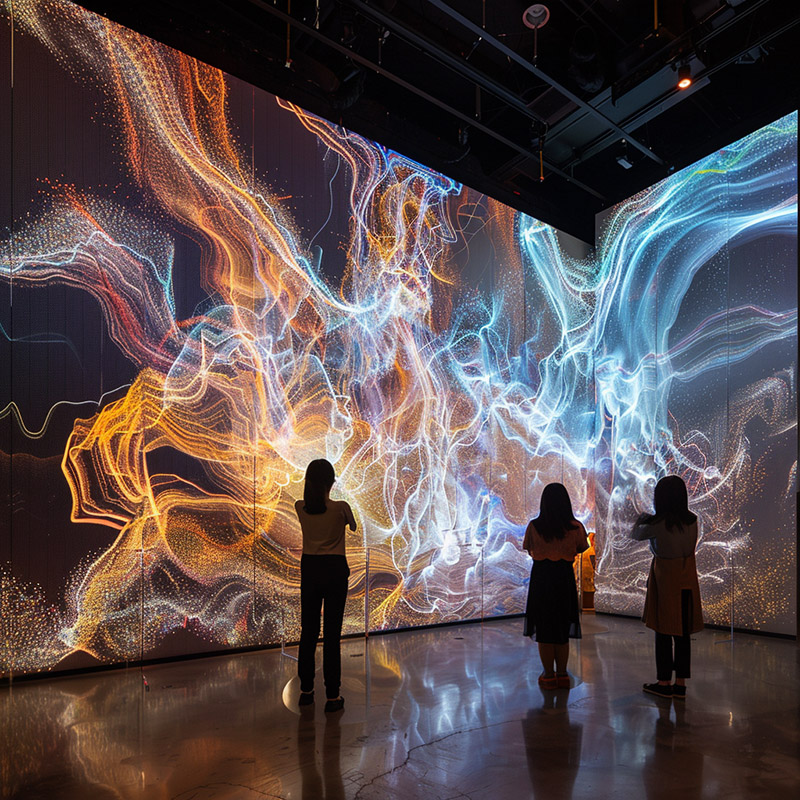
AI-enhanced visualizations translate complex data into compelling visual narratives, allowing artists and scientists to communicate abstract concepts in an intuitive and aesthetically pleasing manner. This fusion of art and data opens up new avenues for education and engagement, making complex information accessible and engaging to a broader audience.
One of the key strengths of AI in data visualization is its ability to process and analyze vast amounts of information, identifying patterns, correlations, and insights that might be difficult for humans to discern. By leveraging techniques such as machine learning, computer vision, and natural language processing, AI can extract meaningful stories from raw data and present them in visually compelling ways. This can lead to new discoveries, hypotheses, and understanding across a wide range of fields, from science and medicine to business and social policy.
Moreover, AI-enhanced visualizations can adapt and evolve in real-time, responding to changes in the underlying data or user interactions. This dynamic and interactive nature of AI-driven visualizations allows for a more immersive and engaging experience, where users can explore the data from multiple perspectives and uncover new insights through experimentation and play. This can be particularly valuable in educational contexts, where interactive visualizations can help students grasp complex concepts and develop a deeper understanding of the subject matter.
The fusion of art and data through AI also opens up new possibilities for creative expression and aesthetic innovation. Artists can use AI to generate novel visual elements, color palettes, and compositions that enhance the emotional impact and narrative power of the visualization. This can lead to the development of new visual languages and styles that push the boundaries of traditional data representation and engage audiences on a more visceral and intuitive level.
For example, an AI-enhanced visualization of climate change data could not only present the facts and figures in a clear and concise manner but also incorporate evocative imagery, animations, and soundscapes that convey the urgency and scale of the problem. By appealing to both the rational and emotional faculties of the viewer, such visualizations can inspire a deeper sense of connection and motivation to take action.
In the realm of scientific communication, AI-enhanced visualizations can help bridge the gap between specialists and the general public. By translating complex research findings into accessible and engaging visual narratives, these visualizations can foster greater public understanding and appreciation of scientific work. This can lead to increased support for research funding, as well as more informed and engaged citizens who are better equipped to participate in public debates and decision-making processes.
Moreover, AI-enhanced visualizations can facilitate collaboration and knowledge sharing across disciplinary boundaries. By providing a common visual language and platform for data exploration, these tools can help researchers from different fields communicate and collaborate more effectively. This can lead to new interdisciplinary insights and breakthroughs that might not have been possible through traditional means of data analysis and representation.
As AI continues to advance, we can expect to see even more sophisticated and immersive data visualization experiences in the future. These may incorporate emerging technologies such as virtual and augmented reality, haptic feedback, and brain-computer interfaces to create even more engaging and interactive data environments. They may also leverage advanced AI techniques, such as generative adversarial networks (GANs) or reinforcement learning, to create even more dynamic and adaptive visualizations that respond to user needs and preferences.
The potential for AI to revolutionize data visualization and communication is immense. By harnessing the power of AI to translate complex information into compelling visual narratives, we can create a more informed, engaged, and empowered society. As artists, scientists, and educators continue to explore this exciting new frontier, we can look forward to a future where data is not just a collection of numbers and facts, but a rich and dynamic source of insight, inspiration, and storytelling.
7. Performance Art
AI can be integrated into performance art, with robots or AI systems participating in dance, theater, or performance pieces. This collaboration between humans and AI can explore themes of technology, identity, and communication.
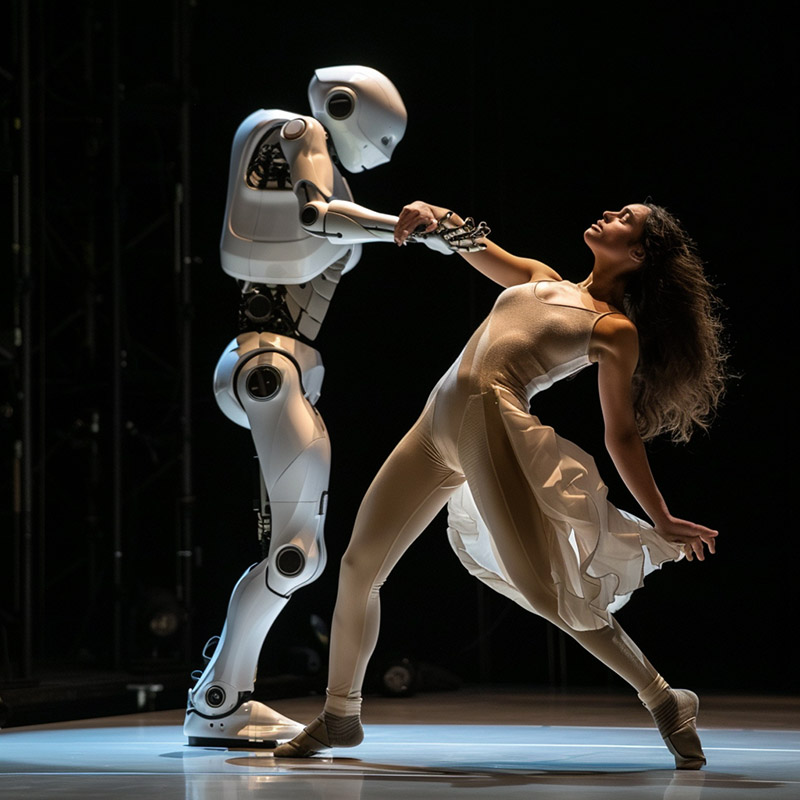
In performance art, AI can be a partner that introduces new forms of expression and interaction. Robots or AI systems participating in performances challenge our understanding of movement, presence, and emotion, offering artists new tools to explore the relationship between humans and technology, enhancing the depth and meaning of their work.
One of the most exciting aspects of AI in performance art is its ability to create new forms of embodied expression. By incorporating robots, drones, or other autonomous systems into their performances, artists can explore the boundaries between the human and the machine, the organic and the inorganic. These AI-driven entities can move, react, and interact in ways that are both familiar and alien, provoking questions about the nature of agency, identity, and consciousness.
For example, a performance piece might feature a dancer interacting with a robotic arm, which responds to the dancer's movements and emotional states in real-time. The robot's movements could be generated by an AI system that has been trained on a vast database of human gestures and expressions, allowing it to engage in a kind of non-verbal dialogue with the human performer. This interaction could highlight the similarities and differences between human and machine cognition, and invite the audience to reflect on the evolving relationship between technology and the human body.
AI can also be used to create interactive and generative elements within a performance, responding to the actions and reactions of the audience in real-time. For instance, an AI system could analyze the facial expressions, movements, and vocalizations of the audience members, using this data to generate visual projections, soundscapes, or other environmental elements that reflect and amplify the collective emotional state of the room. This could create a powerful sense of shared experience and co-creation between the performers and the audience, blurring the boundaries between spectator and participant.
Moreover, AI can help to extend the reach and impact of performance art beyond the confines of the physical stage. By integrating AI-driven virtual and augmented reality technologies, artists can create immersive and interactive experiences that can be accessed by audiences around the world. These virtual performances could incorporate generative and procedural elements that adapt to each individual viewer, creating a unique and personalized experience that reflects their own emotional and psychological state.
AI can also be used to create autonomous performance agents that can engage with audiences in more intimate and personal ways. For example, an AI-driven chatbot or virtual avatar could engage in one-on-one conversations with individual audience members, using natural language processing and sentiment analysis to tailor its responses to their specific needs and concerns. This could create a powerful sense of connection and empathy between the audience and the artwork, and help to explore the emotional and psychological dimensions of human-machine interaction.
The integration of AI into performance art represents an exciting and transformative development that could help to redefine the boundaries of artistic expression and human experience. By embracing the creative possibilities of this technology, while also remaining attuned to its limitations and risks, performance artists can create works that are both technically innovative and emotionally resonant, inviting us to reflect on the complex and evolving relationship between humans and machines in the 21st century.
8. Creative Collaboration Platforms
AI-driven platforms can facilitate collaboration among artists from different disciplines or locations, suggesting ways to combine their work into new, cohesive pieces, and fostering a global creative community.
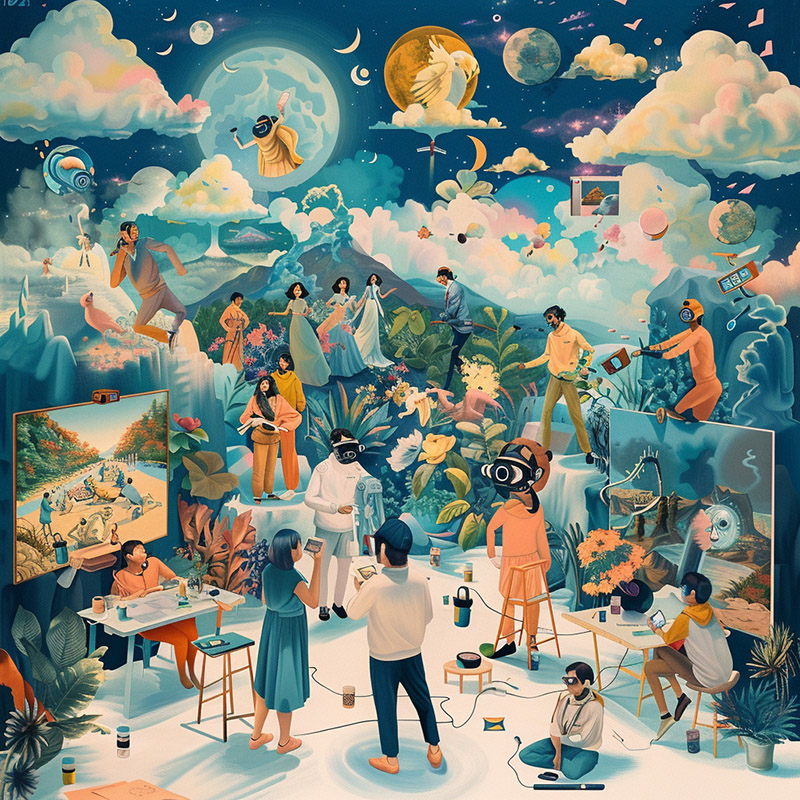
AI-driven creative collaboration platforms break down geographical and disciplinary barriers, connecting artists worldwide and fostering cross-cultural and interdisciplinary art projects. These platforms use AI to suggest collaborations, integrate different art forms, and inspire new creations, enriching the global art scene.
One of the key advantages of AI-driven collaboration platforms is their ability to match artists based on complementary skills, styles, and interests. By analyzing vast amounts of data on artists' previous works, creative processes, and social networks, these platforms can identify potential collaborators who may never have connected otherwise. This can lead to the formation of diverse and dynamic creative teams that bring together a wide range of perspectives and expertise, sparking innovation and pushing the boundaries of traditional art forms.
Moreover, AI can facilitate collaboration across different media and disciplines, suggesting ways to integrate various art forms such as music, visual art, dance, and literature. For example, an AI system could analyze a musician's compositions and a painter's artworks, identifying common themes, emotions, or stylistic elements that could form the basis for a multimedia performance or installation. By providing a common language and framework for cross-disciplinary collaboration, these platforms can help to break down the silos that often separate different artistic communities and traditions.
AI-driven collaboration platforms can also provide artists with new tools and resources for creative experimentation and expression. For instance, these platforms could offer access to large databases of images, sounds, and text that artists can use as raw material for their work, as well as AI-powered tools for image and video editing, music composition, and 3D modeling. By democratizing access to these resources and technologies, collaboration platforms can empower artists from diverse backgrounds and skill levels to create and share their work with a global audience.
In addition to facilitating collaboration between individual artists, AI-driven platforms can also support larger-scale participatory art projects that engage entire communities or even global networks of creators. For example, a platform could use AI algorithms to generate a shared set of creative prompts or constraints that artists around the world can respond to in their own unique ways, creating a vast and varied body of work that reflects the diversity and interconnectedness of the global art community. These projects can help to foster a sense of solidarity and shared purpose among artists, while also raising awareness about important social, political, and environmental issues.
The future of AI-driven creative collaboration is full of exciting possibilities. As these platforms become more sophisticated and widely adopted, they could help to create a more vibrant, diverse, and interconnected global art scene, where artists from all backgrounds and disciplines can come together to create works that inspire, provoke, and transform. By harnessing the power of AI to facilitate collaboration and creativity, while also remaining grounded in human values and experiences, these platforms can help to unlock the full potential of the arts in the 21st century.
9. Personalized Art Experiences
AI can create personalized art experiences for individuals by analyzing their preferences, social media activity, or even emotional responses. This can lead to art that is more engaging and meaningful on a personal level.
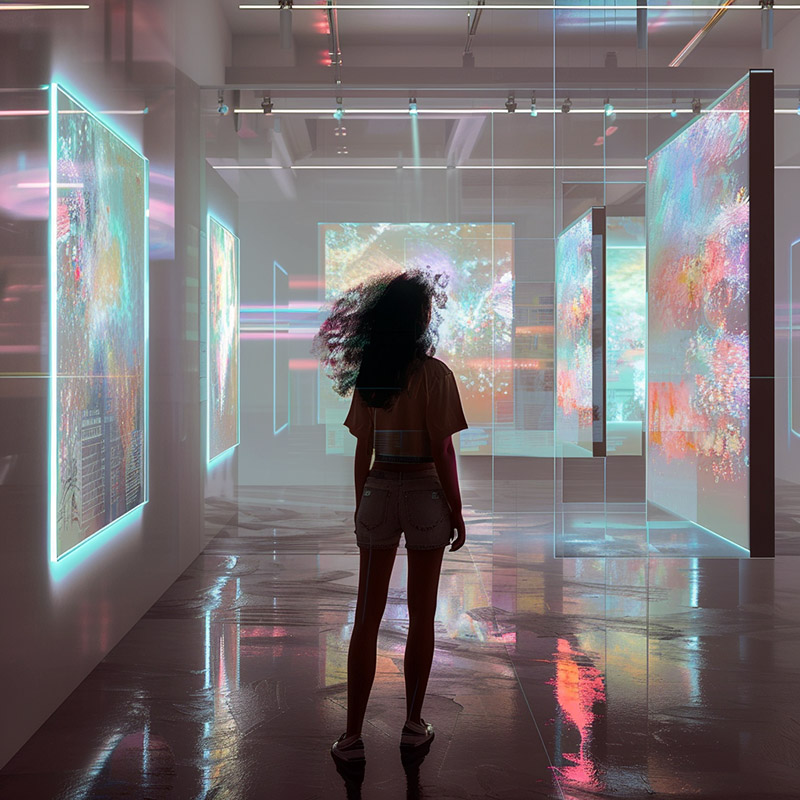
AI's ability to create personalized art experiences allows artists to engage with their audience on a more personal level. By adapting artworks to reflect individual preferences or experiences, AI facilitates a deeper emotional connection and understanding between the artist and the viewer, making art more relatable and impactful.
One way AI can personalize art experiences is by analyzing an individual's data, such as their social media activity, browsing history, or even biometric data, to create tailored artistic content. For example, an AI-powered installation could use facial recognition and sentiment analysis to detect a viewer's emotional state, and then generate visual or auditory content that resonates with their mood or personality. This could create a powerful sense of empathy and connection between the artwork and the viewer, as if the art is "speaking" directly to them.
AI can also enable interactive and participatory art experiences that adapt to the viewer's actions and choices in real-time. For instance, an AI-driven virtual reality artwork could allow viewers to explore a dynamic and responsive environment that changes based on their movements, gestures, or decisions. This could create a sense of agency and co-creation, where the viewer becomes an active participant in the artistic process rather than a passive observer.
Moreover, AI can help artists to create personalized and meaningful experiences for specific communities or individuals. For example, an artist could use AI to generate a unique series of portraits that reflect the diversity and individuality of a particular neighborhood or cultural group, based on photographs and stories shared by community members. This could help to foster a sense of pride, belonging, and representation among the participants, and promote greater understanding and empathy across different social and cultural divides.
AI-driven personalization can also enable new forms of storytelling and narrative art that adapt to the viewer's personal history and context. For instance, an AI-powered film or video game could use data about the viewer's life experiences, values, and beliefs to generate a unique storyline that reflects their own journey and challenges. This could create a more immersive and emotionally resonant experience that blurs the boundaries between art and life, fiction and reality.
The potential for AI to create more personal and impactful art experiences is significant. By leveraging the power of data and algorithms to tailor artistic content to individual preferences and contexts, AI can help to bridge the gap between artists and audiences, fostering greater empathy, understanding, and connection. As we continue to explore the possibilities of this emerging field, it is important to keep the human experience at the center of our efforts, and to use AI as a tool for enhancing rather than replacing the unique and irreplaceable qualities of human creativity and expression.
10. Augmented Reality Art
AI can enhance augmented reality (AR) applications, allowing artists to create interactive works that blend the physical and digital worlds. Viewers can use AR devices to experience these artworks in their own environments, making art more accessible and immersive.
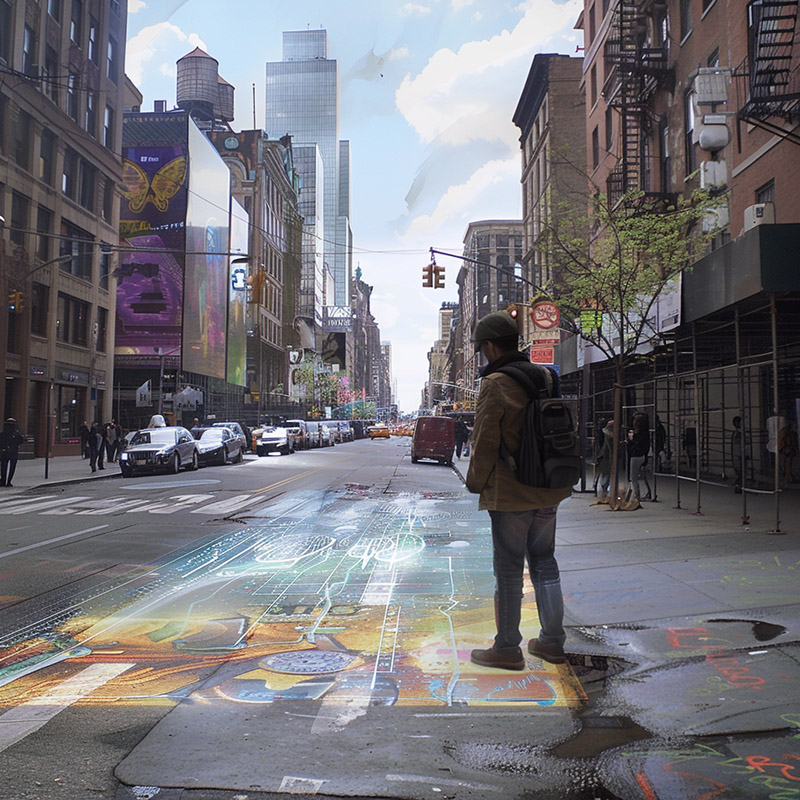
AI enhances augmented reality art by enabling more complex and interactive experiences that blend the physical and digital worlds. Artists can use AI to create AR artworks that respond to and evolve with the environment or the audience, pushing the limits of what is possible in art. This technology provides a canvas for experimentation and innovation, offering viewers a new way to experience and interpret art.
One of the key advantages of AI in augmented reality art is its ability to create highly responsive and adaptive experiences that change based on real-world input. For example, an AI-powered AR installation could use computer vision and machine learning algorithms to analyze the movements, gestures, and facial expressions of viewers, and then generate visual or auditory content that responds to their actions in real-time. This could create a sense of playful interaction and discovery, as viewers explore the artwork and see how it reacts to their presence and behavior.
AI can also enable AR artworks that evolve and grow over time, based on the cumulative interactions and contributions of multiple viewers. For instance, an AI-driven AR mural could invite passersby to leave virtual "marks" or messages on the wall using their smartphones, which the AI then incorporates into the overall composition. Over time, the mural would become a living, ever-changing reflection of the community's collective creativity and expression.
Moreover, AI can help to create AR experiences that blend seamlessly with the physical environment, creating a sense of magic and wonder. For example, an AI-powered AR sculpture could use 3D scanning and spatial mapping technologies to analyze the contours and textures of the surrounding space, and then generate digital elements that appear to emerge organically from the physical world. This could blur the boundaries between the real and the virtual, inviting viewers to question their perceptions and assumptions about the nature of reality.
AI-enhanced AR art can also provide new opportunities for storytelling and narrative exploration. For instance, an AI-driven AR game could use natural language processing and sentiment analysis to generate branching storylines and character dialogues based on the player's choices and emotional responses. This could create a more immersive and personalized experience that adapts to the individual's unique perspective and journey.
The potential for AI to enhance and expand the possibilities of augmented reality art is significant. By leveraging the power of machine learning, computer vision, and other AI technologies, artists can create experiences that are more responsive, immersive, and emotionally resonant than ever before. As we continue to explore this exciting new frontier, it is important to foster a spirit of experimentation, collaboration, and critical reflection, and to use these tools in ways that enrich and inspire the human experience.